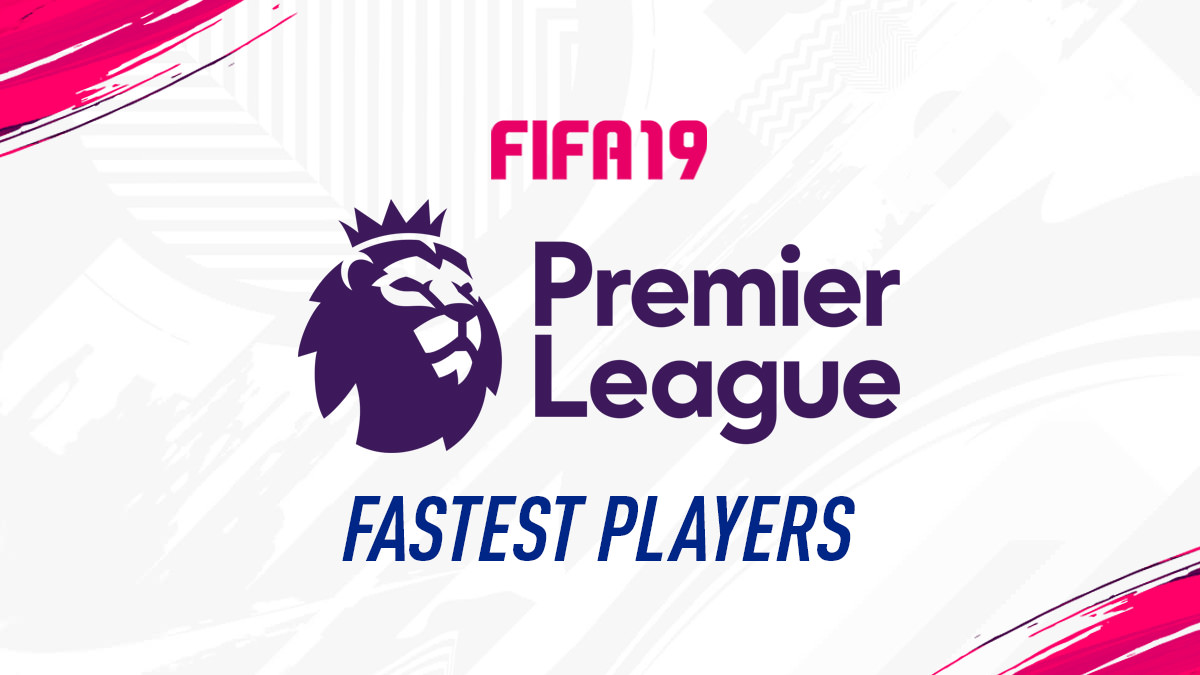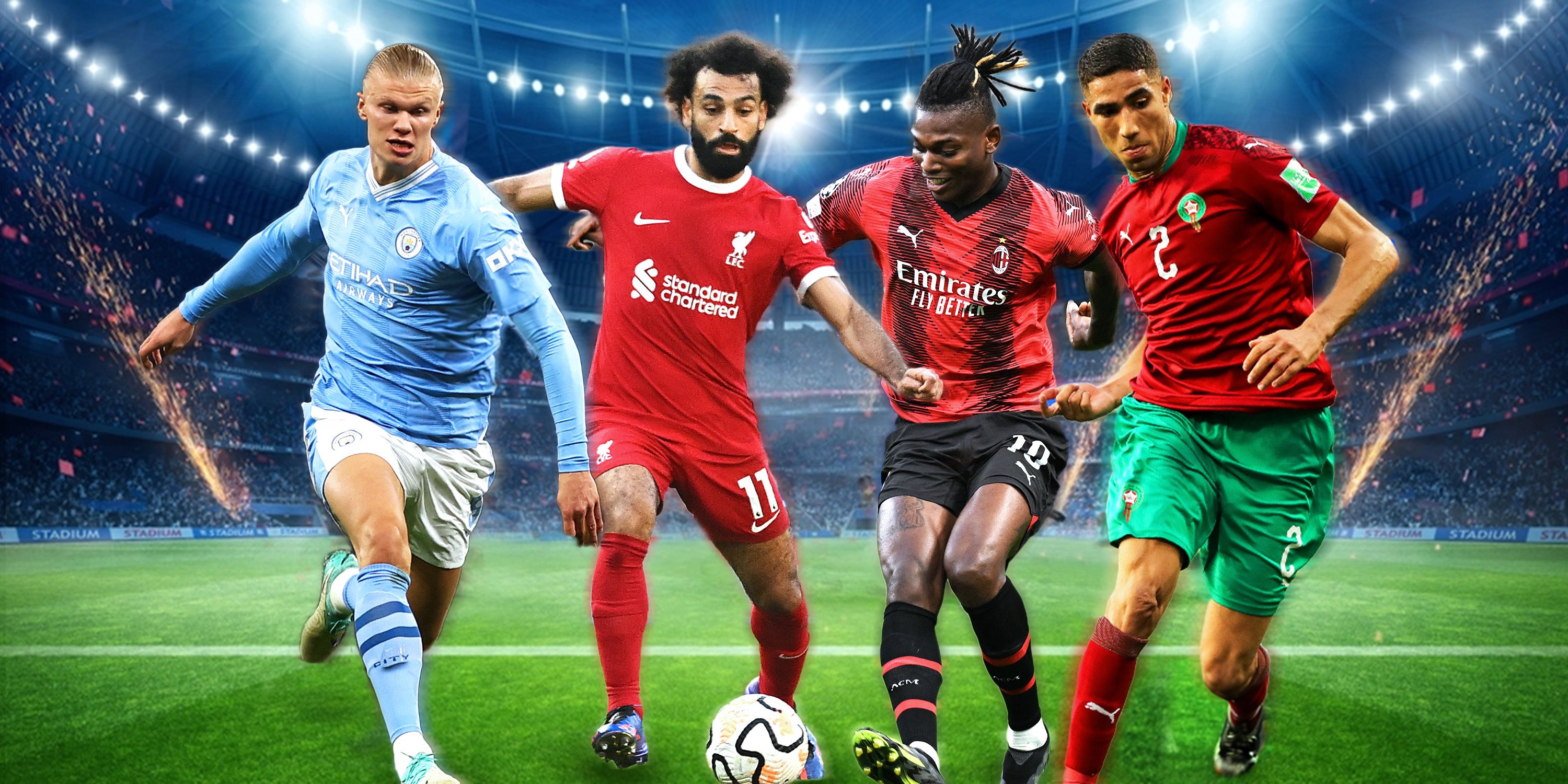
The Blazing Trail: Unpacking the Fastest Players Across Football’s Elite Leagues
Football, often dubbed ‘the beautiful game,’ is a symphony of skill, strategy, and athleticism. While tactical nous and technical wizardry often steal the headlines, there’s one attribute that consistently electrifies fans and strikes fear into opponents: sheer pace. In an era where the game is played at an increasingly frenetic tempo, the ability to accelerate, sprint, and maintain top speed has become more crucial than ever. From devastating counter-attacks to last-ditch defensive recoveries, speed is a weapon that can turn the tide of a match in an instant.
But what defines "fastest"? Is it raw top speed, explosive acceleration, or the sustained ability to make high-intensity runs throughout 90 minutes? And how do these characteristics manifest across the diverse tactical landscapes of Europe’s top leagues? This article delves into the science of speed in football, spotlights the blistering talents dominating the Premier League, La Liga, Bundesliga, Serie A, and Ligue 1, and explores the nuanced role pace plays in modern football.
The Science of Speed on the Pitch
Before we dive into individual players, it’s essential to understand what constitutes speed in a football context. It’s rarely about a straight-line 100-meter dash; instead, it’s a complex interplay of several factors:
- Acceleration: The ability to go from a standing start or low speed to maximum velocity in a short burst. This is critical for beating defenders in tight spaces, reacting to loose balls, or launching a quick counter.
- Top Speed: The absolute maximum velocity a player can reach. While less frequently sustained in a game, it’s vital for covering vast distances quickly, whether chasing a long ball or tracking back defensively.
- Agility: The ability to change direction quickly and efficiently while maintaining speed. This separates a fast straight-line runner from a truly effective footballer who can weave through traffic.
- Speed Endurance: The capacity to repeatedly perform high-speed efforts throughout a match without significant decline in performance. Modern football demands relentless pressing and continuous sprints.
Measuring these attributes has become increasingly sophisticated. GPS tracking systems embedded in player vests provide real-time data on distances covered, top speeds, number of sprints, and acceleration bursts. Optical tracking systems, using cameras around the stadium, offer another layer of data, capturing movement patterns and speeds without requiring physical tags on players. While not all official data is publicly released, these technologies give clubs invaluable insights into player performance and physical conditioning.
Premier League: The Relentless Pace of English Football
The Premier League is renowned for its high intensity, end-to-end action, and emphasis on transitional play. This environment naturally favors players who can cover ground quickly and execute actions at blistering speed.
Key Players:
- Kyle Walker (Manchester City): At 30+, Walker defies age with his incredible top speed and recovery pace. Often clocked among the fastest in the league, his ability to track back and nullify counter-attacks is crucial for City’s high defensive line. He combines raw pace with intelligent positioning.
- Marcus Rashford (Manchester United): A master of explosive acceleration, Rashford thrives on running in behind defenses. His initial burst is devastating, allowing him to gain a critical yard on defenders and open up shooting opportunities. His speed is a cornerstone of United’s counter-attacking threat.
- Mohamed Salah (Liverpool): While often praised for his dribbling and finishing, Salah’s speed is integral to his game. His quick bursts down the right flank, combined with his relentless work rate, make him a nightmare for full-backs. He’s not just fast; he uses his pace intelligently to exploit spaces.
- Mykhailo Mudryk (Chelsea): Though still adapting to the Premier League, Mudryk showcased his raw, blistering pace during his time at Shakhtar Donetsk and has already displayed glimpses of it in England. His ability to hit top speed almost instantly makes him a terrifying prospect in wide areas.
- Anthony Gordon (Newcastle United): The young winger has exceptional acceleration and works tirelessly off the ball, using his speed to press defenders and create turnovers high up the pitch.
Tactical Impact: Premier League teams often employ a high press, requiring quick players to close down opponents. On the flip side, many teams rely on rapid counter-attacks, making players like Rashford and Salah invaluable. Defensive solidity often hinges on full-backs and centre-backs possessing the pace to recover.
La Liga: Technical Brilliance Meets Explosive Bursts
Spain’s top flight is traditionally associated with technical finesse, intricate passing, and possession-based football. However, the emergence of dynamic wingers and full-backs has added a new dimension of pace, particularly for quick transitions and breaking down stubborn defenses.
Key Players:
- Vinicius Jr. (Real Madrid): Arguably one of the most electric players globally, Vinicius combines incredible acceleration with dazzling dribbling skills. His ability to explode from a standstill and leave defenders in his wake is a primary weapon for Real Madrid, especially in one-on-one situations.
- Ousmane Dembélé (PSG/Ex-Barcelona): When fit, Dembélé is a phenomenon of speed and two-footedness. His acceleration and top speed are elite, allowing him to be a constant threat on either wing. His raw pace is a nightmare for defenders who struggle to contain his direct runs.
- Ronald Araujo (Barcelona): While a central defender, Araujo possesses astonishing recovery pace for his position. This allows Barcelona to play a higher defensive line, knowing he can often track back and negate through balls that might otherwise lead to clear chances.
- Iñaki Williams (Athletic Bilbao): Williams is renowned for his incredible work rate and blistering pace, especially over long distances. He consistently makes runs in behind, stretching defenses and offering a direct outlet for Athletic Bilbao.
Tactical Impact: While possession is still king, La Liga teams increasingly value players who can inject pace to break down compact low blocks or exploit spaces left by attacking opponents. The emphasis on individual brilliance in attacking wide areas makes explosive wingers highly sought after.
Bundesliga: High-Octane Counter-Pressing and Verticality
The German Bundesliga is famous for its high-scoring games, aggressive counter-pressing, and direct, vertical football. This style of play places a premium on players who can cover vast distances at high speeds and maintain intensity for 90 minutes.
Key Players:
- Alphonso Davies (Bayern Munich): Widely considered one of the fastest players in world football, Davies’ top speed is simply breathtaking. As a left-back, he combines defensive solidity with the attacking prowess of a winger, often seen making lung-busting runs from his own half into the opponent’s box. His recovery pace is legendary.
- Jeremie Frimpong (Bayer Leverkusen): Another incredibly rapid full-back/wing-back, Frimpong is a constant threat with his blistering runs down the right flank. His acceleration and agility make him incredibly difficult to contain, contributing heavily to Leverkusen’s attacking play.
- Karim Adeyemi (Borussia Dortmund): Adeyemi possesses explosive acceleration and a low center of gravity, making him incredibly elusive. He thrives on runs in behind, using his pace to latch onto through balls and get into dangerous positions.
- Sheraldo Becker (Union Berlin/Fenerbahçe): Becker, particularly during his time at Union Berlin, was a revelation with his raw, explosive pace. He was instrumental in Union’s counter-attacking setup, consistently clocking some of the highest speeds in the league.
Tactical Impact: The "Gegenpressing" philosophy, pioneered in Germany, demands that players sprint to win the ball back immediately after losing it. This requires immense speed endurance. Furthermore, the quick transitions often lead to space in behind, which rapid attackers like Adeyemi or Davies exploit with devastating effect.
Serie A: Tactical Evolution and Lightning Strikes
Historically known for its defensive solidity and tactical nuances, Serie A has undergone a significant evolution in recent years, with many teams adopting more expansive and attacking styles. This shift has amplified the importance of pace, particularly for breaking down deep-lying defenses and executing quick counters.
Key Players:
- Rafael Leão (AC Milan): The Portuguese forward is a force of nature, blending raw power with incredible bursts of speed. His ability to carry the ball from his own half, leaving multiple defenders in his wake, is a highlight reel waiting to happen. He’s arguably the most electrifying player in the league with the ball at his feet.
- Khvicha Kvaratskhelia (Napoli): "Kvaradona" might be known for his dazzling dribbling and creativity, but his underlying pace and agility are crucial to his effectiveness. He can accelerate quickly, change direction on a dime, and leave defenders flat-footed, creating space for himself and teammates.
- Federico Chiesa (Juventus): When fully fit, Chiesa is a whirlwind of energy and pace. His relentless pressing, combined with his blistering runs down the wing, make him a constant threat. He possesses excellent acceleration and the stamina to sustain high-intensity efforts.
- Theo Hernández (AC Milan): Like Davies, Hernández redefines the modern full-back role with his incredible pace and attacking drive. His ability to surge forward from defense, often carrying the ball deep into the opponent’s half, adds a vital dimension to Milan’s attack.
Tactical Impact: While defending remains a core tenet, Serie A teams now look for players who can unlock defenses with individual brilliance and pace. The ability to quickly transition from defense to attack, exploiting any momentary disorganization, has become a key tactical weapon.
Ligue 1: The Cradle of Explosive Talent
France’s Ligue 1 often serves as a formidable proving ground for young talents before they move to other top European leagues. It’s a league rich in athletic potential, and many of its brightest stars possess blistering pace.
Key Players:
- Kylian Mbappé (Paris Saint-Germain): The undisputed king of pace in world football, Mbappé combines a terrifying top speed with incredible acceleration and exquisite finishing. He turns defense into attack in a blink, making runs that few defenders can match. His speed is a fundamental aspect of PSG’s attacking dominance and his overall threat.
- Achraf Hakimi (Paris Saint-Germain): As a full-back, Hakimi provides relentless attacking impetus with his powerful, rapid runs down the right flank. His speed allows him to be in two places at once, contributing significantly to both attack and defense.
- Jonathan David (Lille OSC): While not purely a speed merchant in the mould of Mbappe, David possesses excellent acceleration and intelligent movement that allows him to exploit spaces created by his pace.
Tactical Impact: Ligue 1 is often characterized by a more open style of play, particularly against the dominant PSG. This allows rapid forwards and wingers more space to operate, making pace a hugely influential factor in offensive success. The league’s emphasis on developing young athletes means many players are naturally inclined towards high-intensity, physical play.
Beyond Raw Pace: The Intelligent Runner
While raw speed is an undeniable asset, it’s rarely enough on its own. The truly elite fast players combine their physical gifts with exceptional football intelligence:
- Timing of Runs: Knowing when to make a sprint to stay onside and exploit space.
- Spatial Awareness: Understanding where defenders are and where the space will open up.
- Decision-Making: What to do at top speed – shoot, pass, dribble?
- Off-the-Ball Movement: Creating angles and drawing defenders out of position for teammates.
Players like Mohamed Salah, Vinicius Jr., and especially Kylian Mbappé exemplify this blend. They don’t just run fast; they run fast intelligently, maximizing the impact of their physical attributes within the team’s tactical framework.
The Ever-Evolving Role of Speed
The modern game’s tactical trends have only amplified the importance of speed. High defensive lines, aggressive pressing, and the demand for rapid transitions mean that players must be able to cover ground quickly in all phases of play. Defenders need pace to recover against lightning-fast attackers, midfielders need speed to press and cover vast areas, and forwards rely on it to break lines and exploit space.
Clubs are increasingly investing in sports science departments to enhance player speed through targeted training, nutrition, and injury prevention. The ability to produce and sustain high-speed efforts throughout a season is now a non-negotiable for elite athletes.
Conclusion
From the blistering sprints of the Premier League to the electrifying bursts in La Liga, the rapid transitions of the Bundesliga, the dynamic evolution of Serie A, and the raw power of Ligue 1, speed is a universal language spoken by football’s most exhilarating players. It’s a fundamental attribute that shapes tactical approaches, defines individual brilliance, and consistently ignites the passion of fans worldwide.
While the data provides valuable insights into who is technically the "fastest," the true artistry lies in how these athletes harness their pace – combining raw power with tactical intelligence, turning a simple run into a game-changing moment. As football continues to evolve, the demand for players who can operate at maximum velocity will only grow, ensuring that the sight of a player blazing past a defender will remain one of the game’s most thrilling spectacles.



